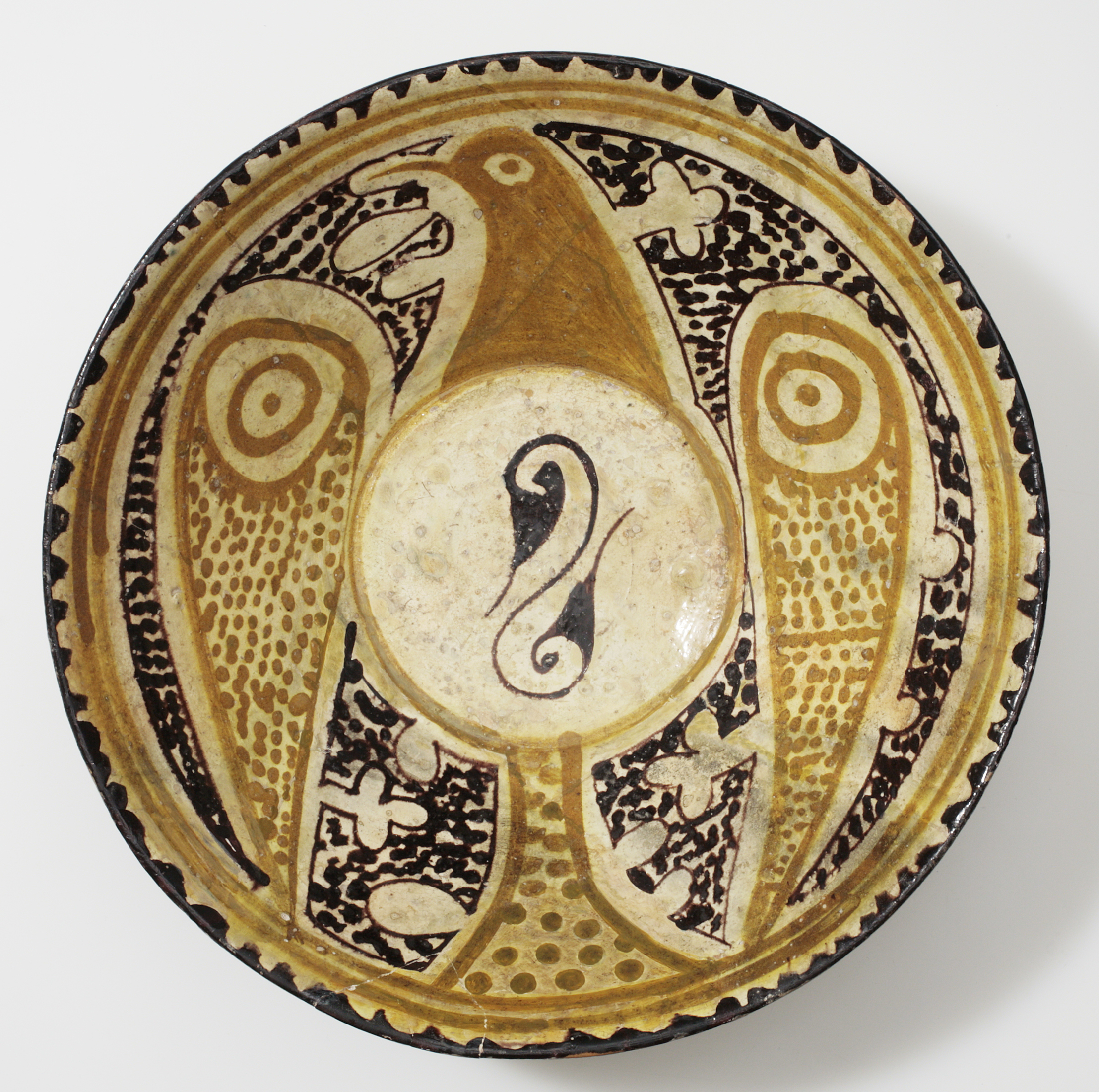 Print Page
Print Page
 Print Page
Print Page
Location: eastern Iran or Central Asia
Materials: earthenware, painted in white, purplish-black and yellowish-ochre slips under a transparent glaze
Dimensions: 10 x 31.3cm
Accession Number: POT 433
Other Notes:
Although sherds of Abbasid lustrewares have come to light in Khurasan and Central Asia, no early examples are known to have been made there. Until the late 12th century in these areas, a yellow slip underglaze was used to imitate the appearance of lustre. The eagle which decorates this bowl may well be a direct copy of a Mesopotamian original, or may hark back to a prototype Sasanian silver dish also showing a heraldic bird.
Bibliography:
E.J. Grube et al, Cobalt and Lustre. The First Centuries of Islamic Pottery, The Nasser D Khalili Collection of Islamic Art, volume IX, London 1994, cat.87, p.93.
J.M. Rogers, The Arts of Islam. Masterpieces from the Khalili Collection, London 2010, cat.37, p.51.
